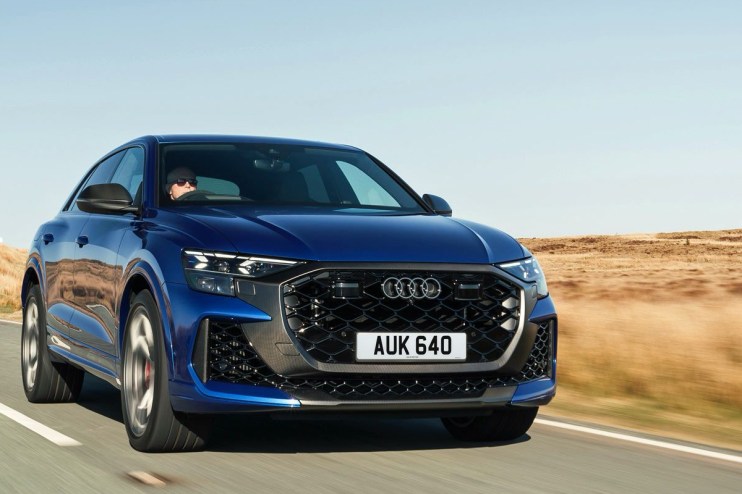Audi RS Q8 Performance review: Iron fist, meet velvet glove

Performance SUVs are going from strength to strength, despite tightening emissions regulations and a divisive image. From the Lamborghini Urus and Aston Martin DBX707, to the Range Rover Sport SV and Porsche Cayenne Turbo E-Hybrid, Premier League players have never been so spoiled for choice.
OK, it’s easy to dismiss hot SUVs as ostentatious ways for footballers to dispense with their wages. But that does a disservice to the level of engineering that goes into creating two-tonne-plus family holdalls that can challenge a supercar for speed.
Audi Sport has thrown the kitchen sink at the RS Q8 Performance, including adaptive air suspension, active anti-roll bars, torque vectoring and rear-wheel steering. It brings big power to the party, albeit with a price tag that starts on the far side of £140,000.
More power than an Audi R8
Audi has not discontinued the regular 600hp, £125,000 RS Q8. However, following a recent facelift, the Performance now acts as the flagship model for the range-topping Q8 SUV.
Given the relative closeness between the two cars on price, opting for the standard RS Q8 almost feels like turning down the volume at a Metallica concert. A rapid SUV like this deserves – and demands – going all-out.
Besides, common sense goes out of the window as the RS Q8 Performance fires into life. A staple throughout the Volkswagen Group, its booming 4.0-litre twin-turbo V8 develops 640hp and 627lb ft of torque here. For comparison, the now-departed Audi R8 V10 supercar produced a maximum of 620hp.
SUV style, NASCAR soundtrack
With launch control engaged, the all-wheel-drive RS Q8 Performance will slingshot itself from 0-62mph in just 3.6 seconds. And it will keep ramming through its eight automatic ratios until a 174mph maximum.
Experiencing the RS Q8 Performance at full throttle is truly visceral, your brain struggling to equate such aggressive acceleration with a high-riding SUV body. Or indeed the NASCAR-like soundtrack coming from the upgraded sports exhaust.
Unleashing the full 640hp is endlessly addictive, with overtakes possible in the blink of an eye. At times, it can almost feel too much for narrow UK roads, demanding a degree of restraint about when to deploy the RS Q8’s firepower.
Thankfully, carbon ceramic brakes are standard on the Performance model, with huge 440mm discs up front and 370mm items at the rear. Their stopping power is as effective as you’d hope in an SUV that weighs more than 2,300kg, helping to inspire plenty of confidence.
Heavy car with a light touch
The Performance can be equipped with 23-inch forged alloy wheels that feature a Y-spoke design said to aid brake cooling. Saving 5kg per corner doesn’t make this a lightweight sports car, though.
Instead, Audi Sport has given the RS Q8 Performance the chassis technology to manage its considerable mass. This starts with adaptive air suspension that, when in Comfort mode, does an incredible job of absorbing bumps and broken tarmac – even on those huge wheels.
Slotting the RS Q8 into Dynamic mode brings added firmness, along with dropping the big SUV closer to the ground. Alternatively, selecting Auto mode lets the car decide the best level of suspension compliance to suit the road.
From the ’Ring to the ring road
The Q8’s active anti-roll bars have an even greater effect on ride and handling, using 48-volt motors to alter their stiffness almost instantly. They aid ride comfort when travelling in a straight line, but tense the car when cornering to keep everything as flat as possible.
It takes some adjusting to, as you enter a corner subconsciously bracing for body-roll that never comes. Naturally, it cannot completely offset the RS Q8’s bulk and ride height, but only the tightest of corners will start to deliver any real lean.
Combined with steering that generates a surprising amount of feel, and added nimbleness from the rear-wheel steering, the RS Q8 Performance can be a sharp tool to hustle along. Indeed, it became the fastest SUV to lap the Nurburgring circuit in Germany.
Inside the Audi RS Q8 Performance
On the inside, the RS Q8 Performance looks similar to the standard Q8 SUV, with a smattering of special touches for this flagship model. These include a steering wheel clad in grippy Alcantara, along with RS Super Sport seats in the front, which are both heated and ventilated.
Being a high-end Audi model means a plethora of screens, with a 12.3-inch digital instrument panel, plus a pair of central touchscreens fitted as standard. One 10.1-inch screen is dedicated to infotainment, with a smaller 8.6-inch display used to adjust the climate control.
Disclaimer: Investing carries risk. This is not financial advice. The above content should not be regarded as an offer, recommendation, or solicitation on acquiring or disposing of any financial products, any associated discussions, comments, or posts by author or other users should not be considered as such either. It is solely for general information purpose only, which does not consider your own investment objectives, financial situations or needs. TTM assumes no responsibility or warranty for the accuracy and completeness of the information, investors should do their own research and may seek professional advice before investing.
Most Discussed
- 1
- 2
- 3
- 4
- 5
- 6
- 7
- 8
- 9
- 10